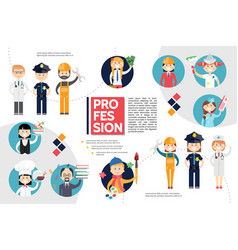Discover Exactly How Seasonal Impacts Can Influence The Effectiveness Of Industrial External Painting And Learn One Of The Most Beneficial Times To Make Certain Sturdy Results For Your Task
Discover Exactly How Seasonal Impacts Can Influence The Effectiveness Of Industrial External Painting And Learn One Of The Most Beneficial Times To Make Certain Sturdy Results For Your Task
Blog Article
Authored By-Leach Whalen
When you're intending a business external painting job, seasonal variables can make or break your results. You'll intend to think about just how temperature level and humidity influence paint application and drying out times. Selecting the best season can ensure your paint adheres effectively and lasts much longer. Yet which periods are really the very best for this type of job? Allow's discover the key elements that can affect your job's success.
The Effect of Temperature Level on Paint Application
When you're preparing an industrial external painting job, the temperature can substantially affect just how well the paint sticks and dries.
Ideally, you want to paint when temperature levels range between 50 ° F and 85 ° F. If it's as well cool, the paint may not heal properly, resulting in concerns like peeling or splitting.
On the flip side, if it's as well hot, the paint can dry too quickly, preventing correct adhesion and leading to an uneven surface.
You must also consider the time of day; morning or late afternoon supplies cooler temperatures, which can be extra positive.
Always inspect the maker's recommendations for the particular paint you're using, as they typically offer advice on the excellent temperature level array for ideal outcomes.
Humidity and Its Result on Drying Times
Temperature isn't the only ecological variable that influences your business external paint job; humidity plays a substantial duty too. High humidity levels can reduce drying times dramatically, affecting the general top quality of your paint task.
When the air is filled with moisture, the paint takes longer to heal, which can lead to problems like inadequate bond and a higher risk of mildew development. If you're repainting on an especially moist day, be gotten ready for prolonged delay times between layers.
It's crucial to check local weather conditions and strategy appropriately. Ideally, go for humidity degrees in between 40% and 70% for optimal drying.
Maintaining these factors in mind ensures your job remains on track and supplies a long lasting coating.
Best Seasons for Commercial Exterior Painting Projects
What's the best season for your industrial outside paint projects?
Springtime and early loss are commonly your best choices. During these periods, temperature levels are moderate, and humidity levels are frequently lower, developing suitable problems for paint application and drying.
Avoid summer's intense heat, which can cause paint to completely dry also rapidly, bring about bad adhesion and coating. Similarly, wintertime's cold temperature levels can hinder proper drying and treating, running the risk of the long life of your paint work.
Go for days with temperatures in between 50 ° F and 85 ° F for ideal results. Remember to inspect the local weather forecast for rainfall, as wet problems can ruin your job.
Planning around look at this website ensures your painting project runs smoothly and lasts longer.
Conclusion
In conclusion, planning your business outside paint projects around seasonal factors to consider can make a considerable distinction in the outcome. By organizing job throughout the perfect temperature levels and moisture degrees, you'll ensure better attachment and drying out times. Bear in mind to keep an eye on local weather prediction and pick the right time of year-- spring and very early autumn are your best choices. Taking more info here will assist you accomplish a durable and specialist surface that lasts.
